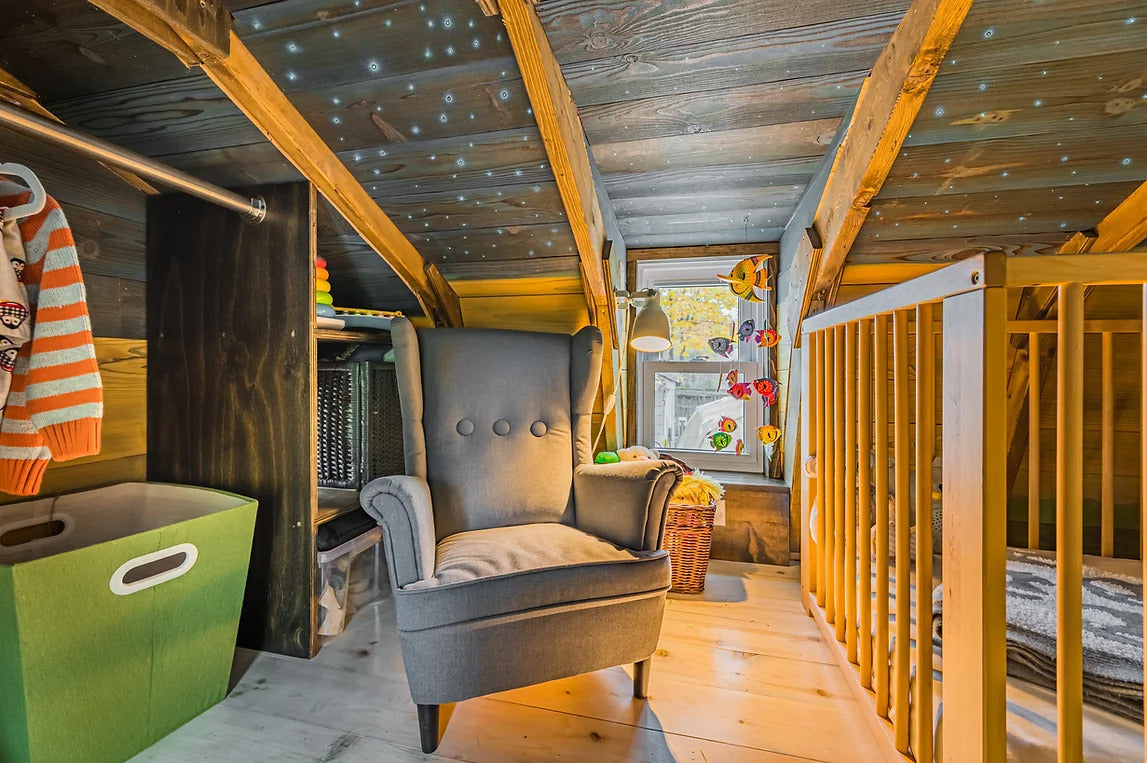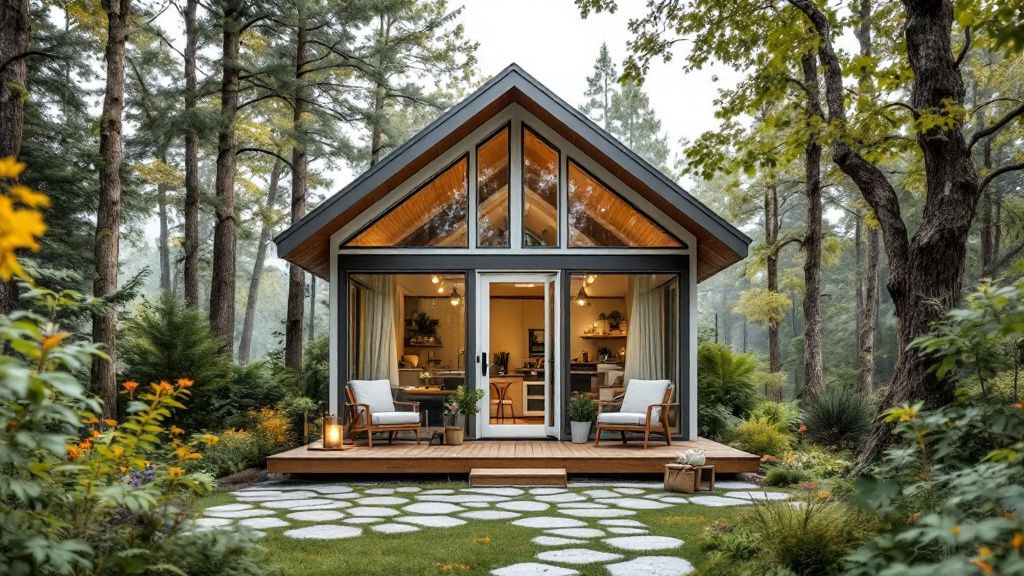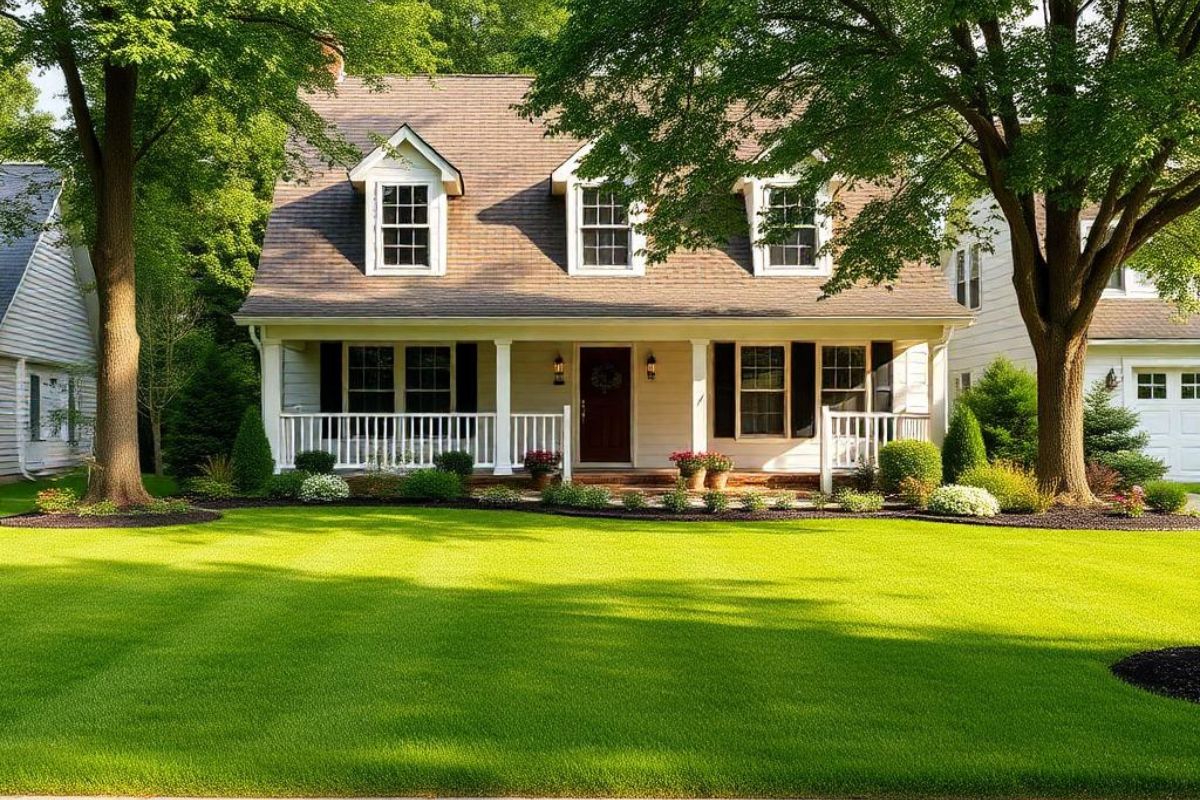View Domek by Acorn Tiny Homes
Designing a kid's bedroom is like crafting the perfect short story. Every element, from the plot to the characters, must work together within limited pages. In our case, the 'pages' are square feet in a tiny house. With less space comes stricter constraints, but that doesn't mean your child's room should lack creativity or functionality.
Just as every word matters in a short story, every inch counts when designing a small space. We're here to share vital factors you need to consider when creating this crucial chapter in your tiny house tale.
Age-Appropriate Design
Remember, it's crucial that you design your kid's room in a way that matches their age and developmental stage; they're not going to stay little forever! As we plan and execute the layout of our tiny house, creating an age-appropriate bedroom for our child is a top priority. We've got to consider their current needs and interests while also thinking about how these will evolve as they grow.
One of the key aspects we're focusing on is incorporating educational elements into the decor. This doesn't necessarily mean plastering the alphabet all over the walls (though, that could certainly be an option if your child is at that learning stage). Instead, we're thinking along the lines of interactive maps or murals related to their current interest like dinosaurs or space exploration.
Interactive decor also plays a significant role in making sure our kids feel engaged and connected with their surroundings despite living in a tiny home. A chalkboard wall where they can freely express themselves or shelves displaying their favorite books are some ideas we're considering.
This approach isn't just about maximizing space but rather about shaping it into an environment that stimulates growth, creativity, and learning right from their very own corner of this small world.
Safety First
Just like a vigilant lighthouse keeper, you've got to ensure that safety is at the forefront of your plans. When designing a kid's bedroom in a tiny house, it becomes even more critical to think about their well-being.
We need to be incredibly careful when choosing furniture and toys. Childproof corners should be top of our list. Sharp edges are not just accidents waiting to happen, they're also peace of mind destroyers. So let's invest in good quality corner guards for tables, chairs, and other pieces of furniture. This way, we can breathe easy knowing our little explorers won't end up with unnecessary bumps or bruises during their adventures.
Furthermore, using non-toxic materials is essential in a confined space like a tiny house. Everything from paint on the walls to the fabric on their beds needs to be free from harmful chemicals. We don't want our children breathing in anything toxic while they sleep or play.
Space Planning and Layout
In the realm of creating a nurturing environment for your little ones, arranging space effectively and smartly within your compact home is like playing an engaging game of Tetris - all about finding the perfect fit that maximizes comfort and function.
Room functionality plays a significant role in this planning phase. It's not just about fitting furniture into the room; it's about how those pieces work together to create a harmonious space where your child can play, learn, and rest.
Space utilization becomes paramount when designing in limited areas. We recommend using multifunctional furniture like loft beds with built-in desks or storage underneath. This clever use of vertical space can free up plenty of room on the floor for playtime and other activities.
We also suggest using wall-mounted shelves instead of standalone bookcases to save precious floor space while still keeping books and toys within easy reach. Opting for light colors can make the room feel spacious and bright, enhancing its overall appeal.
.jpeg)
Bed Selection
Choosing the right bed can't be overlooked, as it's not only a centerpiece of your child's room but also a vital aspect influencing their comfort and sleep quality.
We believe that considering mattress types and bedding materials is essential in making the best choice for your tiny house.
When choosing mattress types, we recommend focusing on size and firmness. A twin or full-sized mattress can be ideal to save space without compromising comfort. The firmness should be balanced to provide both support and softness for growing bodies. Additionally, consider mattresses with hypoallergenic properties. These are beneficial especially if your child has allergies or asthma.
Bedding materials play an integral role too. Opting for natural fibers like cotton or silk can enhance breathability and help maintain temperature balance - crucial factors in ensuring a good night's sleep. Moreover, they're gentle on sensitive skin which is perfect for kids.
Storage Solutions
Maximizing your storage space is key, and with clever solutions, you can easily store toys, clothes, and books - all while keeping the room tidy and stylish. Clutter management should be one of our top priorities when designing a kid's bedroom in a tiny house.
We need to think about how we can incorporate smart storage solutions that blend seamlessly with the rest of the decor. Space-saving furniture is a fantastic solution here. Think beyond conventional wardrobes and chests of drawers; opt for multifunctional pieces that serve more than one purpose. For instance, beds with built-in storage compartments or desks that fold up against the wall when not in use are great options. Similarly, floating shelves can be used to display toys or books without taking up valuable floor space.
We can also make use of vertical space by installing wall-mounted racks or pegboards for hanging accessories or art supplies. Even the backside of doors could be utilized as an extra storage area using over-the-door organizers.
Color and Theme Selection
Bursting with vibrant hues or calming pastels, there's nothing quite like a well-thought-out color scheme to breathe life into a little one's personal haven. The psychological impact of colors should never be underestimated. They can influence mood and behavior, so it's crucial to choose wisely.
Blues and greens are known for their calming effect, perfect for creating a serene environment conducive to sleep. On the other hand, brighter shades like yellows and oranges can stimulate creativity and energy.
When considering themes for your kid's bedroom in your tiny house, theme longevity is an important aspect you shouldn't ignore. We all know how quickly kids' interests change; one day they're obsessed with dinosaurs, and the next they're smitten by space exploration! So while it could be tempting to design based on their current fad, we recommend choosing themes that grow with them over time—think nature-inspired elements or classic nautical designs.
Lighting Design
When it comes to brightening up your little one's cozy corner, a well-orchestrated lighting plan can really turn the tables. Lighting design is an essential element in creating a functional and delightful kid's bedroom in a tiny house. It's not just about adding lamps or overhead lights; it involves careful consideration of various factors.
A top priority should be natural illumination. We all know how beneficial sunlight is for children's health and mood. If possible, position your child's bed near windows to maximize daylight exposure. In addition, consider using light-colored curtains that allow sunlight to filter through while still providing privacy.
Light control is equally vital when designing kids' bedrooms in small spaces. Kids need their space to be flexible for different activities like sleeping, playing, or studying. So we suggest installing dimmer switches or adjustable lights so you can easily regulate the brightness level according to their needs.
Flooring Options
Choosing the right flooring for your little one's room can be quite a puzzle. When designing a kid's bedroom in a tiny house, we have to consider more than just aesthetics. The criteria of material durability and allergy considerations are paramount.
We need to think about how much wear and tear that floor will endure. Kids can be rough on floors with their constant play and occasional spills. Therefore, it's essential to choose durable materials that can withstand this type of activity without showing signs of damage quickly. Options like vinyl or laminate flooring may be excellent choices due to their resistance to scratches and stains.
Another critical factor is considering any allergies your child might have. Some materials such as carpet can trap allergens, which could trigger reactions in sensitive individuals. Hardwood or tile might be a better choice here since they're easier to clean and less likely to harbor allergens.
Play and Activity Areas
Just like a ship needs a dedicated space for the captain to steer, our little ones need their designated play and activity areas in their cozy abode.
When designing a kid's bedroom in a tiny house, it's essential to consider how we can incorporate play and activity areas without compromising on space. Interactive furniture is an excellent idea. These are perfect as they serve many purposes - think of beds with built-in desks or chairs that double up as storage units. They not only save space but also add an element of fun to the room.
Sensory play is another thing we should factor in when carving out these spaces. Sensory activities engage kids' senses and help them develop cognitively, linguistically, socially, emotionally, physically, and creatively. A small sensory wall or corner filled with different textures and materials can be an exciting addition.
Privacy and Personal Space
While it's certainly vital to provide your child with dedicated areas for play and activities in a tiny house, another critical aspect not to underestimate is respecting their need for privacy and personal space.
Creating a private enclave within the limited confines of a tiny home can be quite challenging but definitely doable. It's essential to establish clear space boundaries early on, making sure that each family member understands the importance of respecting these zones.
One practical way of achieving this is by using room dividers or curtains. These barriers help distinguish your kid's area from the rest of the house, offering them a sense of autonomy. Additionally, consider incorporating soundproofing measures into their bedroom design. This could involve using noise-reducing materials in walls or ceilings or investing in quality headphones that can block out background noises during study hours or when they simply want some quiet time.
Incorporating Growth and Adaptability
Let's face it, children grow faster than we anticipate, and their needs change along with them - an aspect that demands adaptability in every corner of your living space.
When designing a kid's bedroom in a tiny house, you need to consider how the room will evolve as your child grows. This does not only mean choosing adaptable furniture but also creating a flexible arrangement that can be rearranged according to changing needs.
One way is through investing in future-proof furniture. Instead of buying a toddler bed that will soon be outgrown, opt for a twin bed with side rails that can later be removed. Adjustable desks and chairs are also wise choices as they can be modified to match your child's growth.
Flexible arrangements are another vital part of ensuring the room remains functional over time. Consider modular storage systems that can shift around the room or even mount on walls to free up floor space. Make sure there's enough light at different heights for reading and playing as well.






Share: